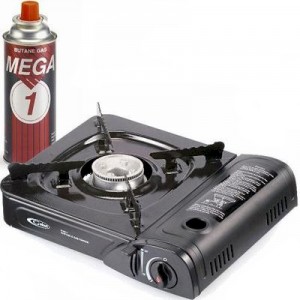 非常食を選ぶ際には、次のようなものを選ぶとよいでしょう。
非常食を選ぶ際には、次のようなものを選ぶとよいでしょう。
すでに手元にあるものも多いかもしれません。
- すぐに食べられる肉類、果物、野菜の缶詰と缶切り
- プロテインバー、フルーツバー
- ドライシリアル、グラノーラ
- ピーナツバター
- ドライフルーツ
- ナッツ類
- クラッカー
- 缶ジュース
- 保存可能な低温殺菌牛乳
- 高エネルギー食品
- ビタミン剤
- 幼児用食品
- 快適・ストレス解消食品
食の安全・衛生
洪水、火災、国家的災害、強風、雪、氷による停電は、食品の安全性を脅かす可能性があります。緊急事態の前後に何をすべきかを知っておくことは、病気のリスクを減らし、腐敗による食品の損失を最小限に抑えることにつながります。
停電は一年中いつでも起こる可能性があり、住宅地では電気が復旧するまでに数時間から数日かかることもあります。電気や冷源がなければ、冷蔵庫や冷凍庫に保存されている食品は安全でなくなる可能性があります。食品に含まれるバクテリアは40~140°Fの温度で急速に増殖し、これらの食品を食べると、人々は重篤な病気になる可能性があります。
- 食品は蓋つきの容器で保存する。
- 調理器具、食器類は清潔に保つ。
- ゴミは密閉できる容器に入れ、必要であれば埋めて外に出す。
- 手を清潔に保つために、石鹸と煮沸消毒した水で頻繁に手を洗いましょう。
- 汚染された水と接触した食品はすべて廃棄してください。
- 室温に2時間以上放置された食品はすべて廃棄してください。
- 異臭、色、食感が異常な食品はすべて廃棄する。
- 粉ミルクを与えている乳児には、可能であれば、すぐに与えられる粉ミルクを使用する。すぐに使える粉ミルクを使用できない場合は、ボトル入りの水を使用して、粉ミルクや濃縮粉ミ
- ルクを調合するとよいでしょう。ペットボトルの水が入手できない場合は、沸騰した水を使用する。ボトル入りの水や沸騰させた水がない場合のみ、処理水を使用して粉ミルクを調合してください。母乳栄養児は母乳栄養を続けてください。
次のようなことはしないでください。
- 見た目は安全でも、膨らんだり、へこんだり、腐食している缶詰の食品を食べましょう。
- 見た目が正常な缶詰でも、見た目やにおいが異常な食品は食べる。
- 火災や衛生上の理由から、缶の中にゴミを溜め込まない。
注:解凍した食品は、通常「冷蔵庫の冷たさ」であれば食べることができます。氷の結晶が残っている場合は再凍結することがあります。念のため、「迷ったら捨てる」ことをお勧めします。
非常時には、キャンドルウォーマー、チェーフィングディッシュ、フォンデュポット、暖炉などの代替調理が可能です。
チャコールグリルやキャンプストーブは、屋外での使用に限ります。
市販の缶詰は、温めずに缶のまま食べることができます。
缶詰の食品を温めるには
ラベルをはがす。
缶をよく洗い、消毒する。(漂白剤1に対して水10で薄めた溶液を使用する)。
加熱する前に缶を開ける。
The following items are suggested when selecting emergency food supplies.
You may already have many of these on hand.
- Ready-to-eat canned meats, fruits, vegetables and a can opener
- Protein or fruit bars
- Dry cereal or granola
- Peanut butter
- Dried fruit
- Nuts
- Crackers
- Canned juices
- Non-perishable pasteurized milk
- High energy foods
- Vitamins
- Food for infants
- Comfort/stress foods
Food Safety and Sanitation
Flood, fire, national disaster or the loss of power from high winds, snow or ice could jeopardize the safety of your food. Knowing what to do before and after an emergency can help you reduce your risk of illness and minimize the amount of food that may be lost due to spoilage.
Power outages can occur at any time of the year and it may take from a few hours to several days for electricity to be restored to residential areas. Without electricity or a cold source, food stored in refrigerators and freezers can become unsafe. Bacteria in food grow rapidly at temperatures between 40 and 140 °F, and if these foods are consumed, people can become very sick.
Do:
- Keep food in covered containers.
- Keep cooking and eating utensils clean.
- Keep garbage in closed containers and dispose outside, burying garbage if necessary.
- Keep your hands clean by washing them frequently with soap and water that has been boiled or disinfected.
- Discard any food that has come into contact with contaminated floodwater.
- Discard any food that has been at room temperature for two hours or more.
- Discard any food that has an unusual odor, color or texture.
- Use ready-to-feed formula, if possible, for formula-fed infants. If using ready-to-feed formula is not possible, it is best to use bottled water to prepare powdered or concentrated formula. If bottled water is not available, use boiled water. Use treated water to prepare formula only if you do not have bottled or boiled water. Breastfed infants should continue breastfeeding.
Don’t:
- Eat foods from cans that are swollen, dented or corroded, even though the product may look safe to eat.
- Eat any food that looks or smells abnormal, even if the can looks normal.
- Let garbage accumulate inside, both for fire and sanitation reasons.
Note: Thawed food usually can be eaten if it is still “refrigerator cold.” It can be re-frozen if it still contains ice crystals. To be safe, remember, “When in doubt, throw it out.”
Cooking
- Alternative cooking sources in times of emergency including candle warmers, chafing dishes, fondue pots or a fireplace.
- Charcoal grills and camp stoves are for outdoor use only.
- Commercially canned food may be eaten out of the can without warming.
To heat food in a can:
- Remove the label.
- Thoroughly wash and disinfect the can. (Use a diluted solution of one part bleach to ten parts water.)
- Open the can before heating.
